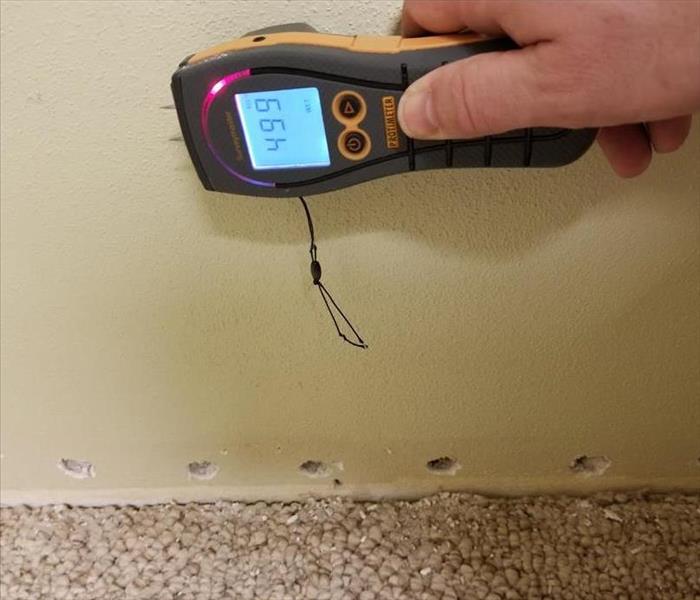Use of Moisture Meters in Commercial Buildings
2/3/2021 (Permalink)
When your home or business is damaged by water, it is important that everything is dried in a timely manner. Timely drying or removal of water damaged materials is essential to prevent secondary damage like mold and rot. But how can property owners tell if things they can’t see or touch are wet? The bigger the property, the more difficult the challenge is as there are more places for the water to run to. That is where SERVPRO of Appleton comes in. To get an accurate picture of your water damage situation, and determine where the water has traveled, and how deep it has gone, we use a variety of moisture meters and even infrared cameras.
There are 3 types of moisture meters: pin, pinless and pin/pinless all in one. In addition, meters can be equipped with a connection option to add accessory probes that can be inserted deeper into a surface for more accurate core or depth readings. They all work on the same basic principle. Moisture conducts electricity. The meters are essentially testing the strength of an electrical connection. Moisture conducts electricity well. The stronger the connection, the wetter the material. Infrared cameras rely on the notion that wet areas not only conduct electricity better, but they also tend to be cooler. Infrared cameras give us an idea where to look for moisture.
We use all types of moisture meters, including probes depending on the surface and situation. Pin meters have two pins on the end of them that are inserted into the surface. These moisture meters can be good for porous materials like carpet or insulation. Pinless meters work well on wood and drywall and other surfaces that we don’t want to put small holes into. Probes are not desirable, as they leave a slightly larger hole, but can become necessary in situations where we need to analyze multiple layers or surfaces.
In the photo you can see that we have removed the baseboard and have drilled holes in the wet drywall. Low profile air movers are placed up to the holes in order to get air circulating behind the wet drywall. We then use moisture meters to determine when the drywall is sufficiently dry. Very often paint will make drywall feel dry to the touch when it is still very wet on the backside. Moisture meters become very important in these situations.



 24/7 Emergency Service
24/7 Emergency Service
